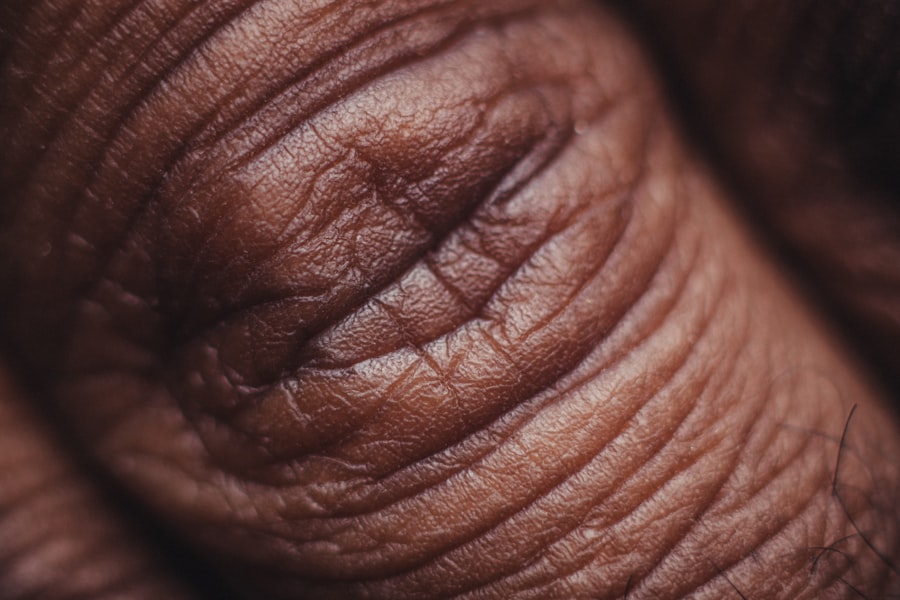Laser hair removal has emerged as a popular choice for individuals seeking a long-term solution to unwanted hair. This method utilizes concentrated beams of light to target and destroy hair follicles, effectively reducing hair growth over time. The procedure is often favored for its precision and speed, allowing for the treatment of various body areas, including the face, legs, and underarms.
As you consider this option, it’s essential to understand how the technology works and what to expect during the process. The laser emits a specific wavelength of light that is absorbed by the pigment in the hair follicles. This absorption generates heat, which damages the follicle and inhibits future hair growth.
While many people experience satisfactory results after a series of treatments, individual experiences can vary based on factors such as hair color, skin type, and the area being treated. Understanding these nuances can help you set realistic expectations and prepare for the journey ahead.
Key Takeaways
- Laser hair removal uses concentrated light to target and destroy hair follicles, resulting in long-term hair reduction.
- Potential risks and side effects of laser hair removal include skin irritation, redness, and changes in skin pigmentation.
- Skin damage from laser hair removal can occur due to incorrect settings, improper technique, or using the wrong type of laser for your skin type.
- Factors contributing to skin damage during laser hair removal include sun exposure, tanning, and using certain skincare products.
- Minimizing the risk of skin damage involves choosing a qualified and experienced practitioner, avoiding sun exposure, and following pre-treatment and post-treatment care instructions.
- Post-treatment care and recovery for laser hair removal may include using soothing skincare products, avoiding sun exposure, and following any specific instructions from your practitioner.
- Seeking professional advice before undergoing laser hair removal is important to assess your skin type, potential risks, and the most suitable treatment plan for you.
- In conclusion, laser hair removal can be safe for your skin when performed by a qualified practitioner and with proper pre-treatment and post-treatment care.
Potential Risks and Side Effects
Temporary Discomfort and Mild Side Effects
During the procedure, you may experience temporary discomfort, often described as a sensation similar to a rubber band snapping against the skin. Additionally, some individuals report redness or swelling in the treated area, which typically subsides within a few hours.
Severe Side Effects and Complications
In rare instances, more severe side effects can occur. These may include blistering, scarring, or changes in skin pigmentation. It’s particularly important for individuals with darker skin tones to be aware of these risks, as they may be more susceptible to hyperpigmentation or hypopigmentation following treatment.
Making an Informed Decision
Understanding the potential risks and side effects of laser hair removal allows you to make an informed decision about whether this treatment is right for you. By being aware of the possible outcomes, you can weigh the benefits against the risks and make a decision that suits your individual needs.
Skin Damage from Laser Hair Removal
One of the most significant concerns surrounding laser hair removal is the potential for skin damage. While the procedure is designed to target hair follicles specifically, the surrounding skin can also be affected by the heat generated during treatment. This can lead to various forms of skin damage, ranging from mild irritation to more severe complications.
As you contemplate this option, it’s essential to weigh these risks against the benefits. Skin damage can manifest in several ways. For instance, you may experience temporary redness or swelling immediately after treatment, which is usually harmless and resolves quickly.
However, in some cases, the heat from the laser can cause burns or blisters, particularly if the device is not calibrated correctly or if proper safety measures are not followed. Understanding these potential outcomes can help you approach the procedure with caution and awareness.
Factors Contributing to Skin Damage
| Factor | Contribution to Skin Damage |
|---|---|
| UV Radiation | Causes sunburn, premature aging, and increases risk of skin cancer |
| Pollution | Can lead to oxidative stress and inflammation, damaging the skin barrier |
| Poor Diet | Lack of essential nutrients can lead to dull, dry, and unhealthy skin |
| Smoking | Reduces blood flow, damages collagen and elastin, leading to wrinkles and sagging skin |
| Stress | Can trigger skin conditions like acne, eczema, and psoriasis |
Several factors can contribute to the likelihood of skin damage during laser hair removal. One of the most critical elements is your skin type and tone. Individuals with darker skin may be at a higher risk for adverse effects due to increased melanin levels, which can absorb more laser energy and lead to burns or pigmentation changes.
Additionally, your hair color and thickness can influence how effectively the laser targets the follicles, potentially impacting your overall experience. Another factor to consider is the skill and experience of the technician performing the procedure. A qualified professional will have a thorough understanding of how to adjust the laser settings based on your unique characteristics, minimizing the risk of skin damage.
Furthermore, pre-treatment care plays a vital role; for example, avoiding sun exposure before your appointment can help protect your skin from potential complications.
Minimizing the Risk of Skin Damage
To minimize the risk of skin damage during laser hair removal, it’s essential to take proactive steps before and during your treatment. First and foremost, choose a reputable clinic with experienced technicians who specialize in laser hair removal. Research their credentials and read reviews from previous clients to ensure you’re in capable hands.
A skilled technician will assess your skin type and customize the treatment plan accordingly. Additionally, following pre-treatment guidelines can significantly reduce your risk of complications. This may include avoiding sun exposure for several weeks leading up to your appointment and refraining from using certain skincare products that could irritate your skin.
During the procedure itself, communicate openly with your technician about any discomfort you experience so they can adjust their approach as needed.
Post-Treatment Care and Recovery

Immediate Post-Treatment Symptoms
You may experience some redness or swelling in the treated area, which is typically normal and should subside within a few hours to a couple of days.
Recovery Tips
To aid in recovery, it’s advisable to avoid hot showers, saunas, or strenuous exercise for at least 24 hours following your treatment.
Skincare Routine for Optimal Healing
In addition to managing immediate post-treatment symptoms, you should also implement a skincare routine that promotes healing. This may include applying soothing creams or gels recommended by your technician and keeping the area clean and moisturized. Avoiding sun exposure is particularly important during this time; using sunscreen with a high SPF can help protect your skin from UV rays that could exacerbate any irritation or pigmentation changes.
Seeking Professional Advice
Before committing to laser hair removal, seeking professional advice is essential for making an informed decision about your treatment options. A consultation with a qualified technician or dermatologist can provide valuable insights into whether this procedure is suitable for your skin type and hair characteristics. During this consultation, you should discuss any concerns you have regarding potential risks and side effects.
Additionally, professionals can help you set realistic expectations regarding results and recovery time. They may also recommend alternative hair removal methods if they believe laser treatment may not be ideal for you due to specific factors such as skin sensitivity or medical history. Taking this step ensures that you are well-informed and prepared for what lies ahead.
Is Laser Hair Removal Safe for Your Skin?
In conclusion, while laser hair removal offers a promising solution for long-term hair reduction, it is essential to approach it with caution and awareness of potential risks. Understanding how the procedure works, recognizing possible side effects, and taking steps to minimize skin damage are all critical components of ensuring a safe experience. By seeking professional advice and adhering to pre- and post-treatment care guidelines, you can significantly enhance your chances of achieving satisfactory results while protecting your skin.
Ultimately, whether laser hair removal is safe for your skin depends on various factors unique to you. By educating yourself about the process and consulting with experienced professionals, you can make an informed decision that aligns with your personal needs and goals. With careful consideration and preparation, you can embark on your journey toward smoother skin with confidence.
If you are considering laser hair removal, you may be interested in reading an article about the latest fashion trends related to hair removal. Check out this article to learn more about how laser hair removal can help you achieve a sleek and stylish look.
FAQs
What is laser hair removal?
Laser hair removal is a cosmetic procedure that uses a concentrated beam of light (laser) to remove unwanted hair. The light is absorbed by the pigment in the hair follicles, which damages the follicle and inhibits future hair growth.
Does laser hair removal cause pain?
Laser hair removal may cause some discomfort, but it is generally well-tolerated by most people. The sensation is often described as a snapping or stinging feeling, similar to a rubber band being snapped against the skin. Some people may experience redness or swelling in the treated area, which usually subsides within a few hours.
Does laser hair removal cause scarring?
When performed by a qualified and experienced professional, laser hair removal is generally safe and does not cause scarring. However, there is a small risk of skin damage, including burns or changes in skin pigmentation. It is important to follow pre- and post-treatment care instructions to minimize the risk of adverse effects.
Does laser hair removal cause ingrown hairs?
Laser hair removal can actually help reduce the occurrence of ingrown hairs. By targeting the hair follicle, laser treatment can prevent the hair from growing back and becoming trapped beneath the skin, which is a common cause of ingrown hairs.
Does laser hair removal cause permanent hair removal?
Laser hair removal can lead to long-term hair reduction, but it is not always permanent. Some people may experience regrowth of fine or lighter hairs over time, which may require maintenance treatments. The effectiveness of laser hair removal can vary depending on factors such as hair color, skin type, and hormonal changes.







